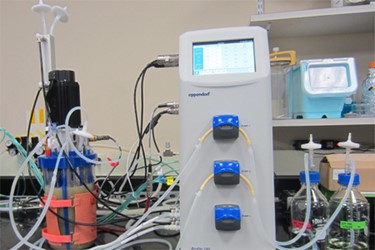Microaerobic Fermentation Of Lactobacillus Acidophilus Within Gut Microbiome Physiological Conditions By BioFlo Bioprocess Control Stations
By Ying Yang, Zachary Greenleaf, William Kann, and Ma Sha

There is growing interest across the food and feed and biofuel industries in microaerobic fermentation, a process occurring at close to anaerobic conditions, but still requiring small amounts of oxygen. The dissolved oxygen level is quite low, often less than 5 %. There is much interest in production of probiotics, due to their great health benefits. Many probiotics are beneficial bacteria that naturally thrive in the human gut microbiome under microaerobic conditions. In the experiment described in this application note we successfully performed microaerobic fermentation of a probiotic strain, Lactobacillus acidophilus, at a very low oxygen level (< 1 %, representing the natural physiological condition of human gut microbiome) using BioFlo® 120 and 320 control stations. The microaerobic fermentation was carried out in BioBLU® 3f Macrosparge Single-Use Vessels. Through automatic gas mix and control, we demonstrated the feasibility of precisely controlling the dissolved oxygen (air saturation) at 4 % throughout the fermentation process using both the BioFlo 120 and 320 control stations. We showed robust growth of Lactobacillus acidophilus, which reached biomass concentrations of 3.13 x 109 CFU/mL and 3.73 x 109 CFU/mL using the BioFlo 120 and 320, respectively. This application note can serve as a good reference for probiotic and microbiome studies under microaerobic conditions.
Get unlimited access to:
Enter your credentials below to log in. Not yet a member of Bioprocess Online? Subscribe today.
